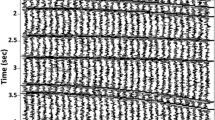Abstract
One of the most important steps in the conventional processing of reflection seismic data is common midpoint (CMP) stacking. However, this step has considerable deficiencies. For instance the reflection or diffraction time curves used for normal moveout corrections must be hyperbolae. Furthermore, undesirable frequency changes by stretching are produced on account of the dependence of the normal moveout corrections on reflection times. Still other drawbacks of conventional CMP stacking could be listed.
One possibility to avoid these disadvantages is to replace conventional CMP stacking by a process of migration to be discussed in this paper. For this purpose the Sherwood-Loewenthal model of the exploding reflector has to be extended to an exploding point model with symmetry to the lineP EX M whereP EX is the exploding point, alias common reflection point, andM the common midpoint of receiver and source pairs.
Kirchhoff summation is that kind of migration which is practically identical with conventional CMP stacking with the exception that Kirchhoff summation provides more than one resulting trace.
In this paper reverse time migration (RTM) was adopted as a tool to replace conventional CMP stacking. This method has the merit that it uses the full wave equation and that a direct depth migration is obtained, the velocityv can be any function of the local coordinatesx, y, z. Since the quality of the reverse time migration is highly dependent on the correct choice of interval velocities such interval velocities can be determined stepwise from layer to layer, and there is no need to compute interval velocities from normal moveout velocities by sophisticated mathematics or time consuming modelling. It will be shown that curve velocity interfaces do not impair the correct determination of interval velocities and that more precise velocity values are obtained by avoiding or restricting muting due to non-hyperbolic normal moveout curves.
Finally it is discussed how in the case of complicated structures the reverse time migration of CMP gathers can be modified in such a manner that the combination of all reverse time migrated CMP gathers yields a correct depth migrated section. This presupposes, however, a preliminary data processing and interpretation.
Similar content being viewed by others
References
Baysal, E., Kosloff, D. D., and Sherwood, J. W. C.: 1983, ‘Reverse Time Migration’,Geophysics 48, 1514–1524.
Claerbout, J. F. and Doherty, St. M.: 1972, ‘Downward Continuation of Moveout Corrected Seismograms,’Geophysics 37, 741–768.
Claerbout, J. F. and Yilmaz, O.: 1980, ‘Prestack Partial Migration’,Geophysics 45, 1753–1779.
Gazdag, J.: 1978, ‘Wave Equation Migration with the Phase Shift Method,’Geophysics 43, 1342–1351.
Gazdag, J. and Sguazzero, P.: 1984, ‘Interval Velocity Analysis by Wave Extrapolation’,Geophysical Prospecting 32, 454–479.
Hale, D. J.: 1983, ‘Dip Moveout by Fourtier Transform’, Ph.D. dissertation, Stanford University, also published as Stanford Exploration Project Report No. 36.
Hubral, and Krey, Th.: 1980, in K. L. Larner (ed.), ‘Interval Velocities from Seismic Reflection Time Measurements’, Society of Exploration Geophysicists, pp. 161–168.
Krey, Th.: 1978, ‘Seismic Stripping Helps Unravel Deep Reflections’,Geophysics 43, 899–911.
Loewenthal, D., Lu, L., Roberson, R., and Sherwood, J.W.C.: 1976, ‘The Wave Equation applied to Migration’,Geophysical Prospecting 24, 380–399.
Loewenthal, D. and Mufti, I. R.: 1983, ‘Reversed Time Migration in Spatial Frequency Domain’,Geophysics 48, 627–635.
Loewenthal, D., Wang, C. J., and Johnson, O. G.: 1985, ‘High Order Finite Difference Modeling and Reverse Time Migration’, Allied Geophysical Laboratories, University of Houston1, 189–221.
McMechan, G. A.: 1983, ‘Migration by Extrapolation of Time-dependent Boundary Values’,Geophysical Prospecting 31, 413–420.
Ottolini, R. and Claerbout, J. F.: 1984, ‘The Migration of Common Midpoint Slant Stacks’,Geophysics 49, 237–249.
Sattlegger, J. W. and Stiller, P. K.: 1973, ‘Section Migration before Stack, after Stack or in between’,Geophysical Prospecting 22, 297–314.
Schultz, P.S. and Sherwood, J. W. C.: 1980, ‘Depth Migration before Stack’,Geophysics 45, 376–393.
Schultz, P. S.: 1982, ‘A Method for Direct Estimation of Interval Velocities’,Geophysics 47, 1756–1671.
Stolt, R. H.: 1978, ‘Migration by Fourtier Transform’,Geophysics 43, 23–48.
Author information
Authors and Affiliations
Rights and permissions
About this article
Cite this article
Loewenthal, D., Krey, T. Reverse time migration of CMP-gathers an effective tool for the determination of interval velocities. Surv Geophys 10, 349–376 (1989). https://doi.org/10.1007/BF01901495
Accepted:
Issue Date:
DOI: https://doi.org/10.1007/BF01901495



